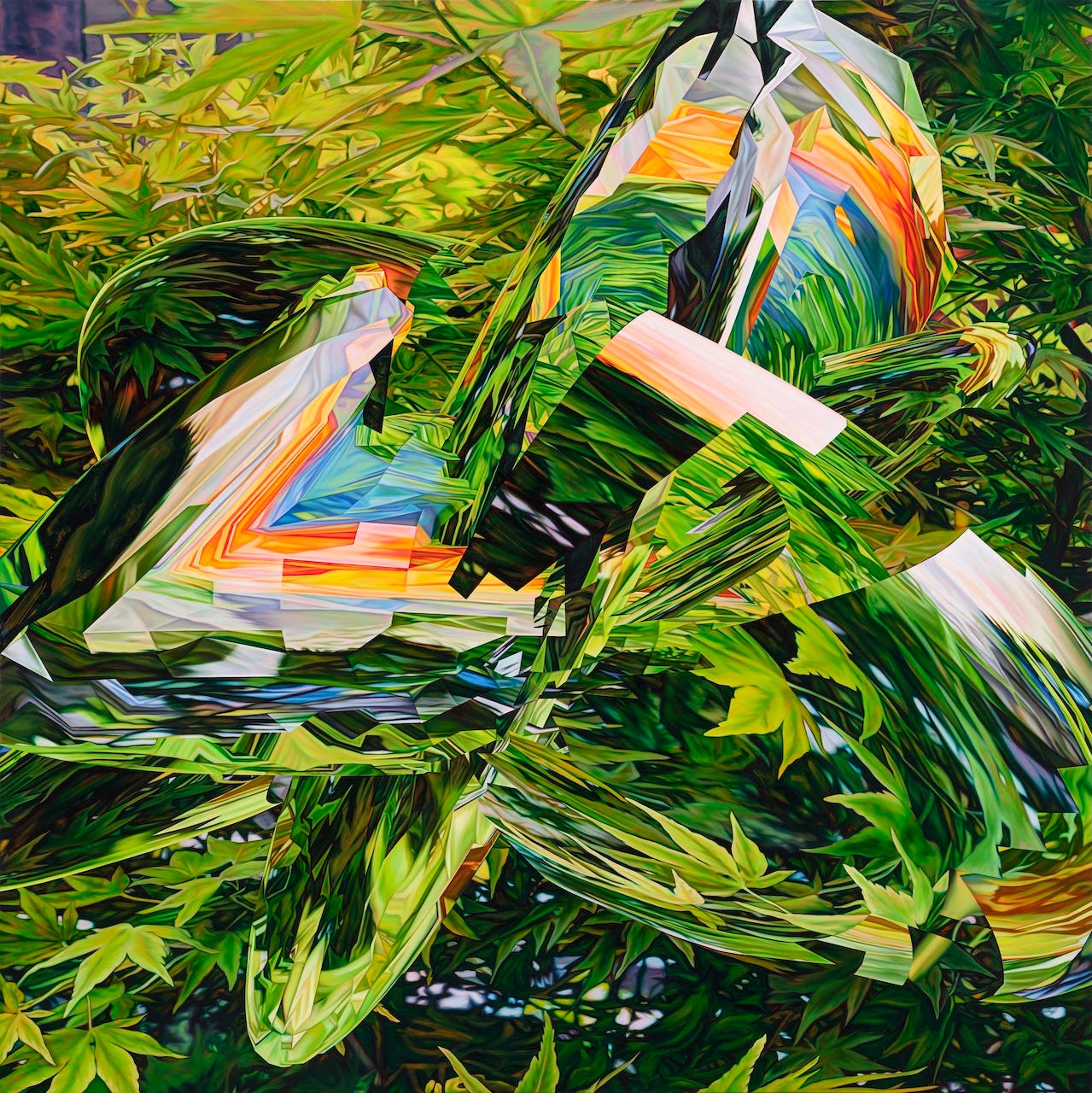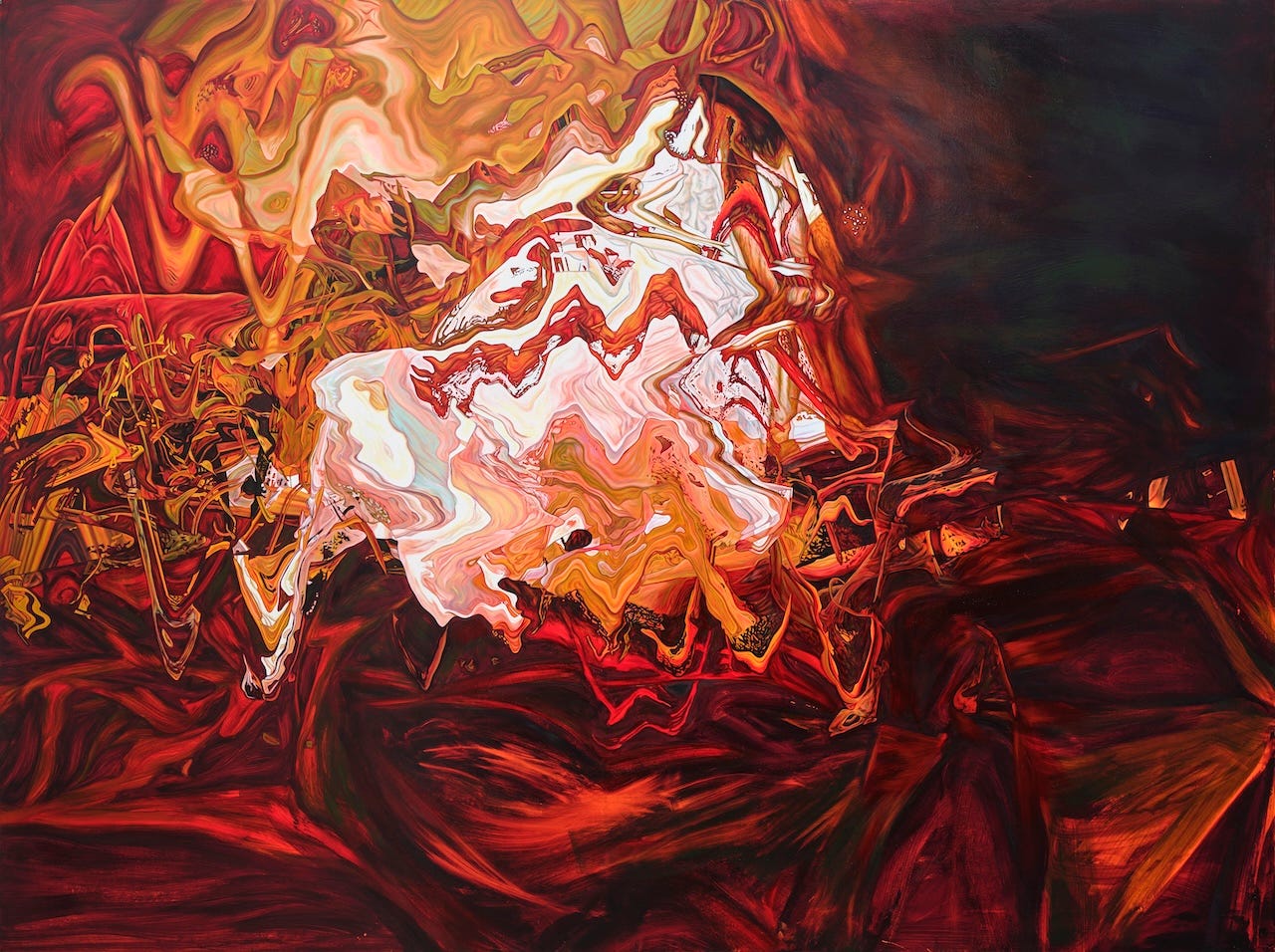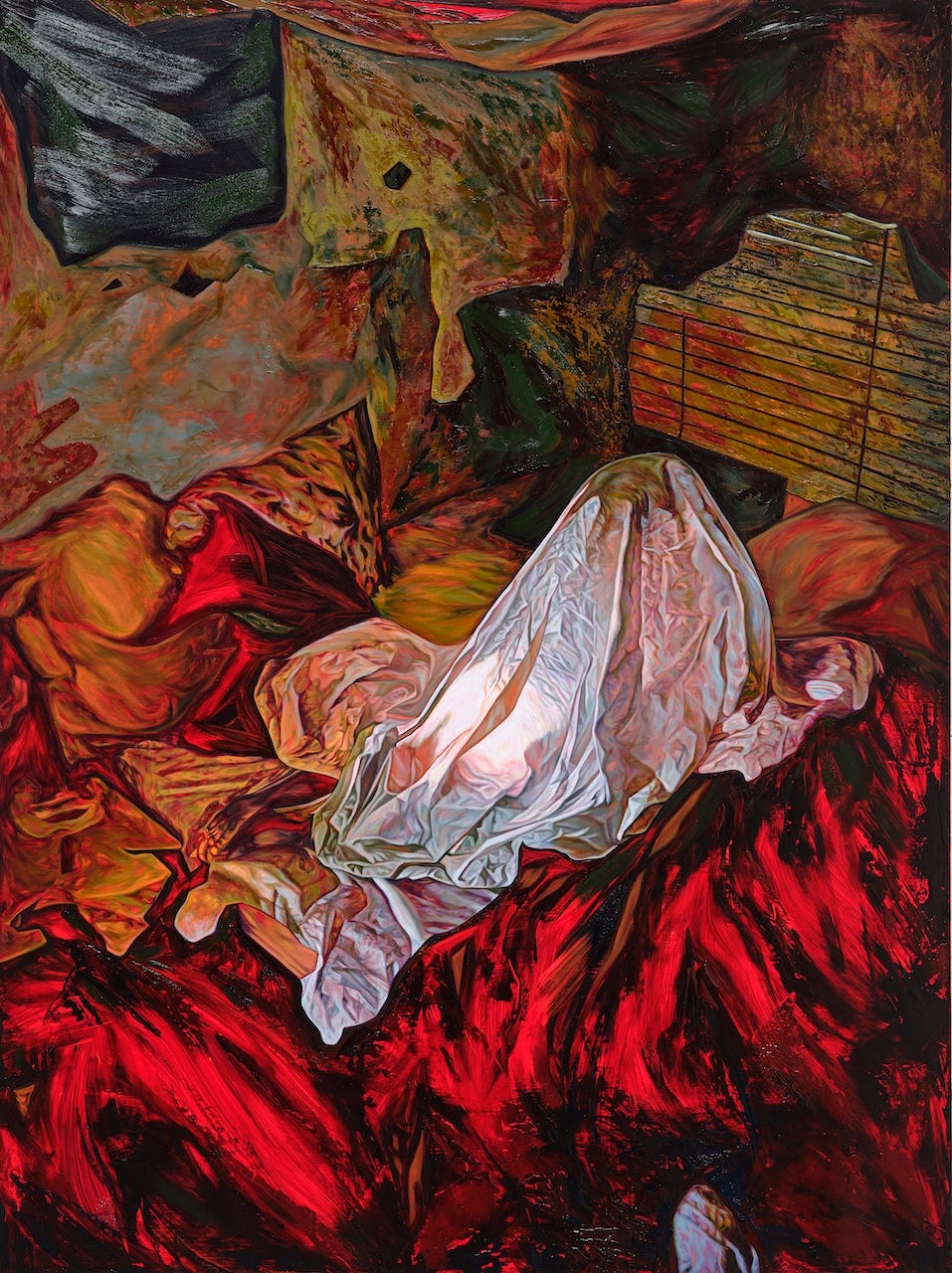Lives of the Artists: Jin Meyerson (Part I)
Jin Meyerson is the Joseph Beuys of tater tot hotdish and can't stop painting corny noodly shit
I’ve moved Nostos over to Substack. If you were already subscribed you’ve been moved over automatically. Thanks for being here and thanks for sharing.
Lives of the Artists is a regular monthly interview column profiling contemporary artists, asking them to share the connections between their home lives and studio practices.
This month I spoke with the Seoul-based painter Jin Meyerson, who is currently in Los Angeles for the opening of his solo exhibition “Safe Space” at Perrotin. Jin is someone I have spent huge amounts of time thinking about and learning from, both as an artist and as a person. He was one of the first painters to bring digital imaging technologies into conversation with a classic studio painting practice, and has been hugely influential over the generation of younger painters that I see defining the direction of painting as we know it today. He was also one of the first role models I had as a single parent trying to make a career in art in Asia. Our conversation touches on all of this and much more, and I think is especially exciting when it gets to thinking through the generational waves of creativity and groundedness that link our pasts, presents, and futures. Jin’s latest work, on show in LA this summer, shows him mapping out a cultural heritage that remains in flux while he grapples with weaving a hopefully textured life for his daughters.
For today’s first portion of our conversation I’ve included two different bodies of work. The first three images are brand new paintings in the LA exhibition, which I wanted to share because I think they’re some of his best work and are representative of where Jin’s way of working has taken him over time. The following three images trace a decade-long cycle of dealing with autobiography and the people around him. The “Seance” series was originally based on imaging of his daughter with an iPad under a tented bedsheet, and the Shaman painting included here riffs further on that motif. All of that bedsheet work, I think, can be traced back to the lonesome and contorted bedsheets of Four Seasons, when Jin just started bringing his life more explicitly into his work.
I want to start by asking about your childhood, particularly your early life experiences with art.
Jin Meyerson: It’s hard for me to separate the adoption experience from childhood because it’s such a core experience. The only thing that I brought with me from my unknown origin was a love of drawing. When I landed in the states on June 28, 1976, I was drawing using endless amounts of paper and figuring out where I was through the drawing. I have very clear memories of making that transfer from Incheon Airport to Minneapolis-St Paul International Airport. It’s funny because the way our memories work becomes really parallel to our social media experience, scrolling through images or personal and intimate sensations. I grew up in a very small farm community in west central Minnesota, a town of about 1000 people, and grew up doing a lot of outdoor stuff, baseball, fishing, all the good stuff that you can do in a small town. The early part of my childhood comes off as very Beuys, the airplane landing in the middle of America, being raised by Swedes. I wasn’t wrapped in felt and fat, but I was certainly pumped full of tater tot hotdish at Lutheran church gatherings on my mother’s side. I was extremely close to my Swedish-American grandmother. She was the matriarch of our family, the first female president of the Minnesota Bankers Association, and her maiden name was Rosenquist.
And then my father was very much this alien, he was a New York City Jewish guy, the only Jewish guy in town, and he was a history professor whose academic career got squashed, so he poured his desire to teach into his kids, which was great sometimes and terrible other times. The polarity of gender that we experience through our mothers and fathers was really amplified because they came from two totally different cultures. I did have this profound experience in that the great American Pop artist James Rosenquist would come visit during the summers. My mom had many different hobbies, and one of them was opening up a small town movie theater in an abandoned gas station, so we had this movie screen, and Rosenquist had a slide projector, and he gave the family a lecture about the work that he’d been working on over the course of the last 20 years. What I remember is being amazed at the fact that you could be an artist, that that could be your job—it’s a totally unimaginable thing when you’re in rural America. By the time I was seven, I already had it in my mind that I was going to be an artist. There was no other choice for me.
Can you share how you got from there to art school?
My parents didn’t have a lot of money, but the one trip we made every year was to New York, where we’d see the Guggenheim and the museums, which was an amazing experience for a Korean adoptee obsessed with drawing. I was just burning through paper and always looking for curatorial input on what to draw next. We define ourselves through our community, and because I spent so much time drawing I got a lot of practice, and it always felt good to be recognized as the best in the class at drawing. I was probably the only kid in my class that got to go to New York, in fact very few kids had even made the two hour drive down to Minneapolis. And Minneapolis has wonderful museums as well, the Walker and the Minneapolis Institute of Art.
This was pre-internet, but I had amazing access to seeing art. My father had copies of Art in America and the New York Review Books and the New Yorker, kicking around the house. He was a free-spirited person and a very serious academic. He ended up writing his dissertation on the great Jewish German-American philosopher Hannah Arendt. One of the highlights of his early academic career was being able to study and teach in Hamburg, where he had a Korean colleague who apparently so endeared himself to my parents that, when they decided to adopt a child, they chose South Korea to honor that friendship. I think there is something to cultural epigenetics. There are these moments in the studio where I feel like I’ve been working on some relentless, repetitive, detailed gesture forever, and start wondering where that comes from, and that’s the go-to strategy of Korean modernism.
Meeting Jim Rosenquist as a pre-teen, when we’re so hungry for influence and open to everything, was very influential. I had a crisis with my adopted parents, ended up in government foster care when I was about 16, and got myself declared a ward of the state, and applied to the Minneapolis College of Art and Design on a scholarship. I did my undergrad work there, then applied immediately to grad school at the Pennsylvania Academy of Fine Art when it was still affiliated with UPenn. At some point during undergrad it became extremely important to me to develop the skills of making and painting. I didn’t talk to my adopted parents for probably six years, but my grandmother stayed with me, and she arranged for me to do an internship with Jim down in his Aripeka, Florida studio when I was 19 or 20. That’s where I learned to mix paint.
Jim used a projector for everything, which I wasn’t into at the time, I was still clinging to this German expressionist way of drawing. A lot of Jim’s stuff was based off of billboard painting technique, so he had a very different sensibility to paint than I did, and we argued a lot. He would say things to me like, “Listen, man, just paint it all one color.” And I would bristle. After grad school I moved to New York, and Jim had this building in Tribeca where he let me stay until he realized that his whiskey and cigars were disappearing. He had a birthday party, Rauschenberg walks in, and Jim says “Bob, this is my nephew, Jin. He’s a pretty good artist, but he paints all this corny noodly shit.” Rauschenberg looks down, looks at me, looks at Jim, and he says, “Jim, what are you talking about? When I first met you, all you wanted to paint was fucking spaghetti.”
In those early years in New York you’ve talked about wanting to make commentary on the culture from this marginal, immigrant position, and you’re making these paintings about American football and Hummers. And then from the show in Hong Kong up until recently there was an autobiographical arc within your work, where you’re using images from your domestic space. Can you talk a little bit about the relationship between your lived reality and the images that make their way into your work?
The early New York work was a nod to pop art and specifically Jim and that idea of American culture. But it was also always very clear to me that my position with American culture was not from the interior, it was always through some kind of adjacency. I would go to Hudson News on my days off from the wood shop and go image shopping in the magazines for a couple hours. Some of the most captivating images you can find are sports photos. They’re dynamic. I’d be looking for a certain level of DPI that I liked painting, but I was also thinking about the most absurd, ridiculous things that I could be using, and I ended up landing on low riders and football and H2 Hummers. I didn’t know exactly what I was doing. I don’t think young artists should know exactly what they’re doing. I had this awareness of Adorno through my father, and then this self-reflexive fuck you not only to the art world and my idea of the history of painting, but also to my last couple years at the academy and myself. It was really important for me, in my mind, to talk about the culture, and I thought from this adjacent position I could say something that hadn’t been said before.
This is the first part of a two-part conversation. We’ll be back next week with the second half, when Jin discusses the perils of biography, his studio routine, and his philosophy of parenting.








Great interview with reat artist!